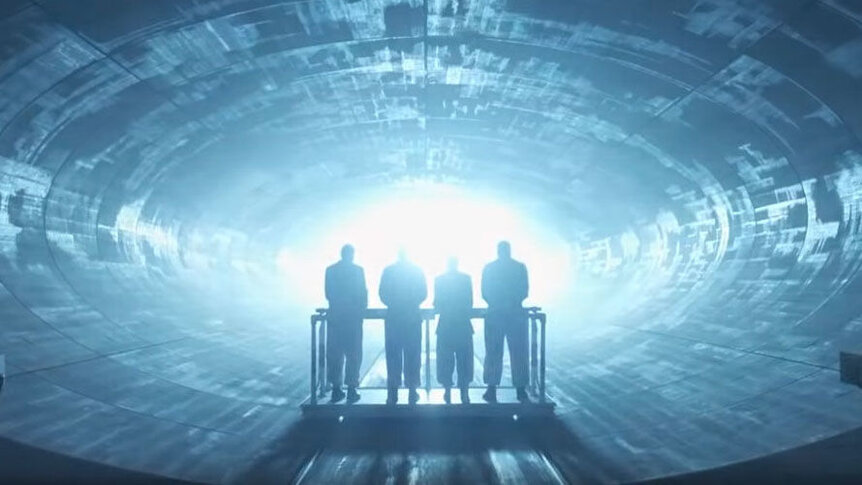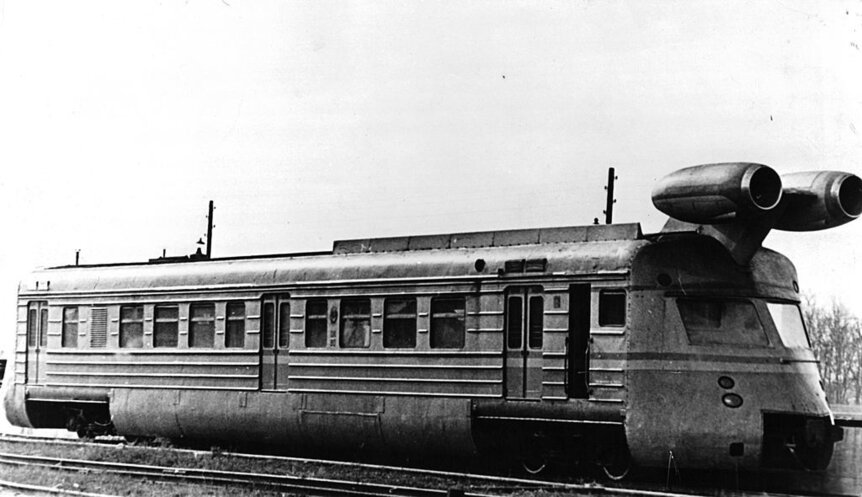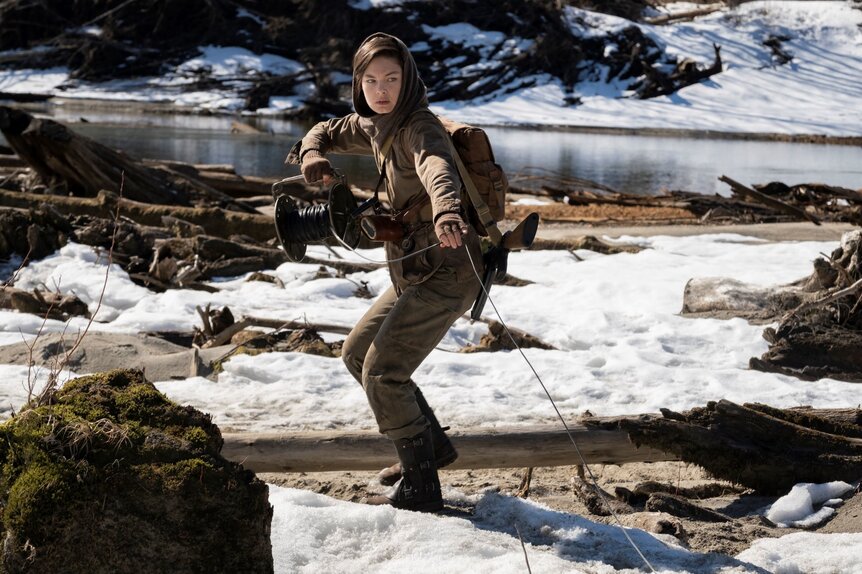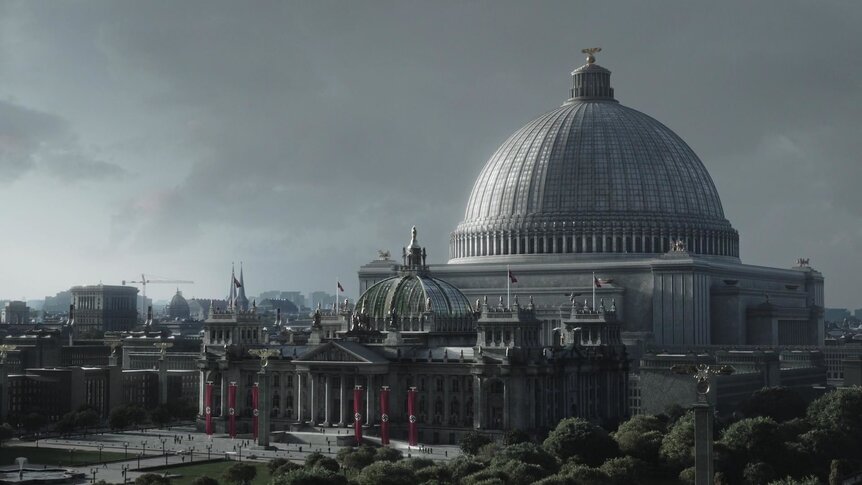Create a free profile to get unlimited access to exclusive videos, sweepstakes, and more!
The Man in the High Castle's Nazi nightmare was created by an unsettling mix of fiction & reality
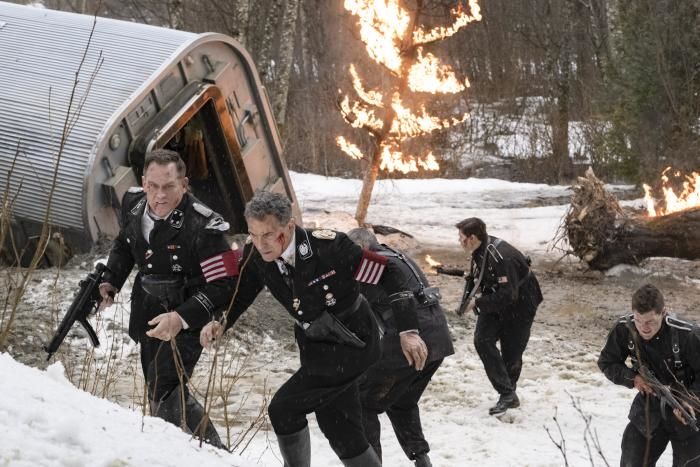
When you're telling an alternate history in which the Axis powers emerged victorious from World War II, the devil is truly in the details. From the crisp, imposing costumes of the officers of the Greater Nazi Reich to the stark color palettes that contrast territories such as the Japanese Pacific States and the Neutral Zone, the world of The Man in the High Castle feels fully realized, even if its reality thankfully wasn't. The final 10 episodes, currently streaming on Amazon Prime along with the preceding three seasons, further expanded the show's dystopian vision.
SYFY WIRE spoke with two of the key architects of the High Castle universe, production designer Drew Boughton and visual effects supervisor Lawson Deming, about creating this alt-world and specifically one of the key set pieces of the final season.
(Full disclosure: I have previously spoken with both men for my officially licensed book on the series, The Man in the High Castle: Creating the Alt World.)
**Spoiler Warning: This story contains spoilers for The Man in the High Castle Season 4.**
A perhaps underappreciated aspect of the show’s worldbuilding was how much plausible speculation came into play. The purest sci-fi element — the alternate universes, or "multiverse" — came from the original Philip K. Dick book and some ideas he had for an abandoned sequel novel. But many others, such as the Nazis' Vertical Takeoff and Landing (VTOL) planes and the massive domed structure known as the Volkshalle, were inspired by real-life concepts. So was the rocket-powered monorail train seen in the climactic final episode, “Fire From the Gods,” that takes the leader of the American Reich, John Smith, to the Die Niebenwelt facility in the Poconos where the portal to access the multiverse resides.
In the real world, Hitler and the Nazis seriously explored the possibility of high-speed rail travel; German engineers even had plans for a rail network that would have connected Germany and occupied Europe. Boughton and Deming used historical what-ifs as inspiration.
"We wouldn't do something that was completely not real," Deming says. "It had to have existed in a limited form [or concept design], and then we would kind of expand on it."
The bullet train design used on the show comes from an actual Soviet concept train from the '70s that had turbojets attached on top, and it could reach speeds of 160 miles per hour. "I found several pieces of reference during preproduction of this Soviet jet-powered commuter train," Boughton reveals. "It was a really peculiar-looking thing. Once we saw that, we kind of fixated on the idea of a jet-powered bullet train [for the show]."
“I’m not sure if they ever came outside of the realm of testing or prototypes,” Deming adds. “But there were legitimately Russian trains fueled by rockets.”
For The Man in the High Castle’s bullet train, the digital set design team created a 3D model, and then Deming and the VFX crew added the CGI. Because the train was also the setting of the big, emotional confrontation between John Smith and his wife Helen, there needed to be a physical set of the train’s interior, too.
“We basically constructed the interior of the middle of the three cars — the security section, the living room, and, of course, the office section. That is where John and Helen have their final dialogue,” Boughton says. “That section of the office was on a gimbal … which is a mechanism that is like a bucking bronco in a bar. It allows the set to move in all different directions.”
Boughton points out that the scope of the jet train sequence is extraordinary given how it involved nearly every department on the production, from the special effects team to the set decorators who handled the train’s lavish interiors. “It’s an enormously complicated multi-departmental thing,” he explains. “Just leaving the visual effects out of it for a moment. The mechanical achievement to create the kind of mechanical structure of this gimbal is award-worthy in and of itself. And then you add in the stunt department and everything that they do is just extraordinary.”
The moment when the train crashes after the resistance fighters blow up the pylons holding up the tracks was perhaps the most challenging part of the entire endeavor.
"We liked the idea of destroying the train tracks and having it crash," Deming says, adding that on-location shooting was done in a snowy river valley in Vancouver. "Those were real explosions we used [when the resistance fighters blow up the train pylons]. We had to end up with the train essentially in the same position at the end of that shot that we then see it in once it becomes the physical back end of the train when John Smith is getting out of it. We had to ... digitally match what the art department had done with their actual prop."
Because the show takes place in a divergent era, the creators had to extrapolate where society would have gone under such a scenario. The producers used the Cold War as a jumping-off point for their theories about what life would be like in a Nazi-ruled society in the 1960s.
“We hunted around for reference imagery that was not rooted in [the] 1940s, but that pulled forward in time," Boughton says. "We ended up looking at Eastern Bloc Soviet satellite countries for this kind of alternative modernist style. Those countries were trying to make society look similar to Western society but without the kinds of freedoms that the West enjoyed."
This inspired elements such as the furniture designs seen during scenes in the Greater Nazi Reich, and especially the architecture. Since the U.S. lost the war in this reality, the "Americana" of the 1950s never developed, so looking to the Soviet-controlled territories for inspiration made sense.
"As you looked at some of the images from East Germany in that period and I, and other places you'd see these sort of modernist furniture and other things that were manufactured within those Soviet Bloc countries, like the automobile," Boughton adds. "They were sober and the colors were just bland — and deliberately so. And that kind of extended across everything, from signage to clothing, cars, and furniture."
The architecture of a Nazi-controlled New York City and especially the world capital of Berlin speaks to the actual designs that Hitler envisioned for Germany. In fact, Albert Speers' memoir Inside the Third Reich was a key reference for the series' vision of Berlin.
"Speers made many models and blueprints of the Volkshalle and other buildings in what Hitler called 'Germania,'” Deming says. "They had grand plans. Now, whether they would have been achievable or not was another question."
"They built these giant concrete blocks that were used for concrete weight testing for the Volkshalle to see how much they would sink into the ground," Boughton points out. “Because Berlin, given its location close to water level, has rather weak soil. If you go to Berlin [today], you'll see these concrete test blocks that are still there from those tests."
Taking their cues from the past to inform the High Castle reality meant emulating not only the visual aspirations of Hitler's empire but its psychological intent as well.
"The idea of the brutalist architecture of the Nazis, the concept behind it, was to intimidate," Deming says. "It was to minimize the individual and to make the single human feel small. It was a real idea the regime had, and for the most part, our show followed that concept."
